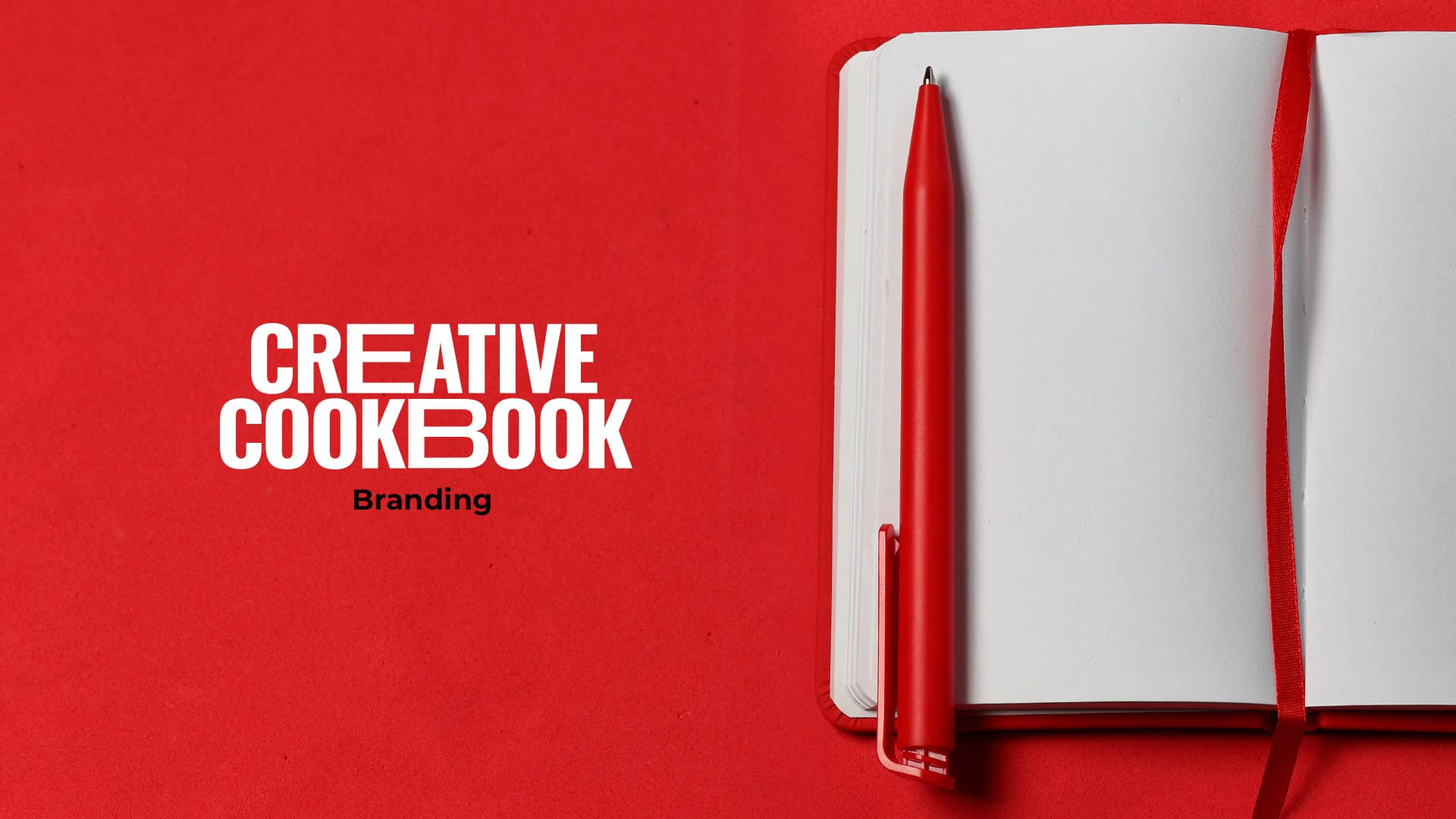Brands are a lot like foods. Some, like a delicious serving of mac and cheese, are universally liked. Others, like the infamous marmite, divide opinion. And then some, like anchovies, are liked only by a select few.
Which category your brand falls into depends largely on your choice of ingredients. Get your ingredient selection right and you’re likely to appeal to a wide audience of people. But, get it wrong, and it’s more likely that nobody is ever going to enjoy the taste of your goods.
And, just like cooking up a universally tasty dish, when crafting your brand it’s as important to get the balance of ingredients right as it is to get the choice of ingredients right. Too much cheese on a pizza and you’re likely to throw up. Too little and you’ve basically got tomato bread (I know, sounds gross). But, if you get the balance right, you know you’re onto a winner.
With that in mind, you’re probably thinking: “what’s the recipe for a tasty-brand that people want to devour?” So let’s have a look.
Key Ingredients:
- A bold mission statement
- A unique brand-voice
- A reasonable price-point
- A high-quality product
For added flavour:
- A sprinkle of trust
- A dash of desire
Method:
Add the oil
Before you even think about throwing a juicy steak in the pan, you need to add oil. The same is true when crafting a winning brand. Think of your products as the steak and your mission statement and brand-voice as the oil. You can still cook a steak without oil, it’s just probably going to end up in disaster.
Whilst there are many elements to a great mission statement, so long as you have a clear vision that’s centred around improving people’s lives in some way, you can’t go far wrong.
As an example, take a look at Amazon’s awesome mission statement:
“We aim to be Earth’s most customer centric company. Our mission is to continually raise the bar of the customer experience by using the internet and technology to help consumers find, discover and buy anything …”
They have a clear vision: “to be Earth’s most customer centric company”. And, let’s face it, you can’t not make people’s lives better when you “continually raise the bar of the customer experience”.
Once you’ve worked out your mission statement, you’ll then want to craft a unique brand-voice. Because that’s what’s going to help set you apart from the crowd. It’s what makes people want to use you instead of your competitors.
Crafting a brand-voice is one of those things that’s often made more difficult than it needs to be. Really, all you need to do is find a voice that’s aligned with your mission statement. Let’s take Amazon again. They’re all about creating a streamlined customer experience. As such, they adopt a clear, concise and easy-to-understand tone of voice. It’s not fancy writing. But, since it makes the customer experience less complicated, it’s aligned with their mission. And their customers appreciate them for it. If they were to litter their marketing materials with big words, complex syntax and long-flowing sentences, they’d end up confusing most of their customers. And that’s not what a company hoping to “continually raise the bar of the customer experience” would ideally want to do.
These days, so many brands over-complicate their messaging that having a clear and simple voice is probably enough to help widen your own brands appeal. That being said, don’t be afraid to inject a little personality and character into your brand. Nike, for instance, have an inspirational tone-of-voice. And, even if you hate sports, you can’t help but read their marketing materials and feel like a champion. Bonus points if you adopt a brand-voice that can evoke an emotion or feeling in your audience.
So, now we’ve got the oil in the pan it’s time to throw some food in. So let’s move on to the next step: products and price-point.
Now throw in the steak (or chicken, or tofu, or green beans…)
The reason I’ve chosen steak for this delicious metaphor is because I like it. And so do a lot of other people. But not everyone does. Similarly, when it comes to your products, no matter how well you brand it, no matter how great the quality, not everyone is going to be feeling it. So don’t take it personally.
Even so, there are things you can do to ensure your brand appeals to as wide an audience as possible. Namely; product-quality and price-point. Ideally you want to offer high quality at a reasonable price. Sounds obvious, right? But it’s not that easy to pull off.
As an example, we have 2 stationery shops near the office: Ryman’s and Paper Tiger. And they’re both great (can you tell I’m a stationery geek?). But, while Paper Tiger is edgier, quirkier, and definitely cooler, I’ll always get my notebooks from Ryman’s. Why? Because the notebooks are less than half the price. Ryman’s isn’t super cheap; a decent notebook will set me back around £7. But I can’t justify paying the £22 price tag for a Paper Tiger notebook. Ryman’s has the quality/price balance right. And, because of that, they’ve won my brand loyalty. Paper Tiger is still a great brand, but the higher price point limits their appeal to a wider audience.
This doesn’t mean you should aim for cheapness if you want your brand to appeal to a large audience though. Pricing your products too low will generally communicate a lack of quality. And, while most of us love a bargain, we’ll rarely take one at the expense of a decent quality product.
Poundland is good example of this in action. If you’ve ever been in one, you’ll know that the majority of the products they sell are the same mainstream supermarket brands we know and love. But, because of the seriously low price-point, it feels like the quality is going to be lesser. And that’s part of the reason why they haven’t achieved the mainstream success of their “discount-retailer” competitors Aldi and Lidl.
While Aldi and Lidl have marketed themselves on having lower-than-average price points, their prices aren’t so low as to make people think the product-quality is massively affected. Just like Ryman’s, they’ve got the price/quality balance right. And they’ve been rewarded with mainstream success because of it.
I guess you could say we’ve got the cooking out of the way now. But we still need to spice things up, so let’s move on to the final step…
Season to taste
Trust and desire do to brands what salt and pepper do to steaks; infinitely improve them when sprinkled on top. We’ll take a look at trust first.
When it comes to building a successful brand, you should always aim to operate honestly. Unfortunately, when it comes to building a brand that appeals to many, honesty and trust aren’t synonymous. In order to build trust, you simply need to deliver on your promises. Although I believe you should operate with honesty and integrity, you don’t need to in order to deliver on your promises.
Take any big name corporation, for instance. No matter how well intentioned they may be, most have been involved in the odd brand-damaging scandal or controversy. And some have been so bad that you’d think no one would ever want to do business with them again. But, the truth is, you can trust them to deliver on their promises to you. Namely, to provide decent quality products at reasonable prices. As such, those businesses will still be appealing to the majority of people.
There’s plenty of brands out there that over-promise and under-deliver. So, by consistently delivering on the promises you make to your customers, you’ll not only set yourself apart from the competition, but you’ll also find your brand is far more attractive to a much greater audience.
With trust taken care of, let’s move on to the final ingredient; desire.
You can definitely be successful without generating huge amounts of desire; loads of brands do it. But it’s definitely a huge advantage when you’re aiming to appeal to large audiences. Think of it as the difference between being the next Huawei or the next Apple. Huawei sell plenty of phones, but you don’t see people pitching up tents outside Huawei stores, desperate to be the first to grab their latest product.
How much desire you can create for your product is generally going to come down to which of these 4 categories it falls into:
- something people need and want
- something people don’t need but still want
- something people need but don’t want
- something people don’t want or need
As you’d expect, if your product falls into the top 2 categories, it’ll be easier for you to get people excited about your products. If it falls into the bottom 2, even though it won’t be impossible, you’re definitely going to be in for a rougher ride.
That said, so long as your product isn’t a complete dud, you’ll be able to generate a decent amount of interest so long as you market your products effectively. And a solid digital-marketing strategy combined with well executed creative marketing materials is going to give you the fastest return on investment in that department.
The ‘must-have’ basic-requirement for any modern brand is a responsive website that’s optimised for search-engines. Ideally, though, you’ll also need to deliver consistently interesting blog-content, an engaging social-media strategy and keyword-optimised Google Ads campaigns. Without this you’ll struggle to gain visibility. People can’t desire your product if they don’t know it exists. Digital-marketing is how you create the visibility.
But, again, the effectiveness of your digital-marketing efforts is still going to be dependent on getting all the other steps right first. Without a decent mission-statement, a unique brand-voice and high-quality products at reasonable prices, you’re not going to be able to generate the trust or desire you need to appeal to the tastes of a lot of people.
Take off your apron, serve and enjoy…
By this point, you should be well on your way to creating a brand that appeals to the tastes of lots of people. Of course, there’s also plenty of other things that go into creating a brand that appeals to many. Things like inspirational leadership or having a unique and exciting product are sure to have an impact on the scope of your reach.
But, as we’ve shown in the article, there are plenty of things you can do outside of that to maximise your reach. If you’re looking for a little more help with creating a brand that appeals to a wide-audience, then make sure to get in touch. Helping brands get noticed is kind of what we do!



